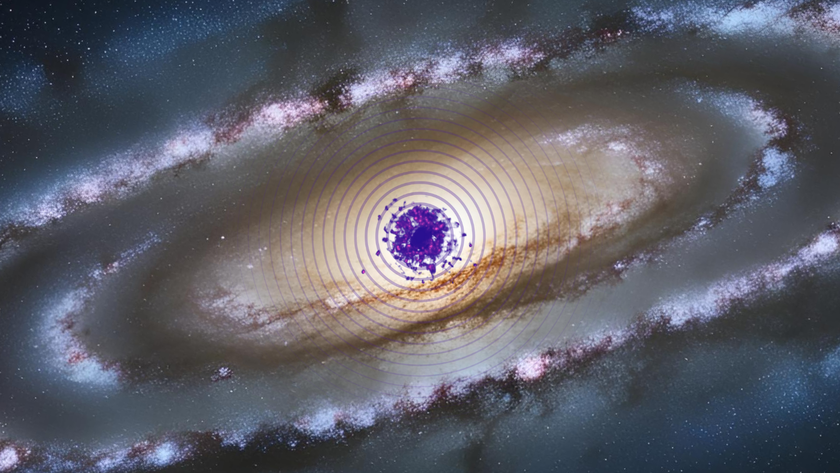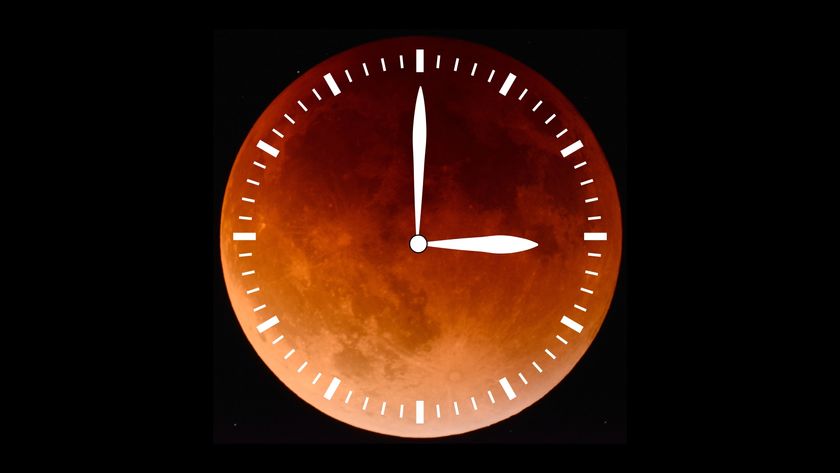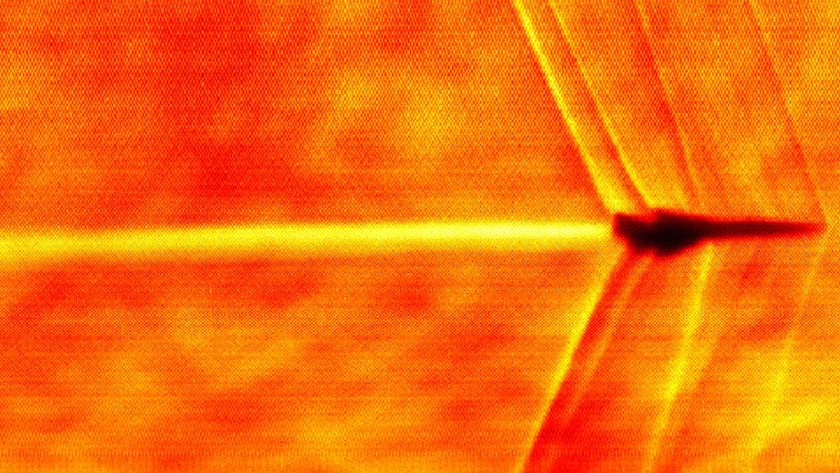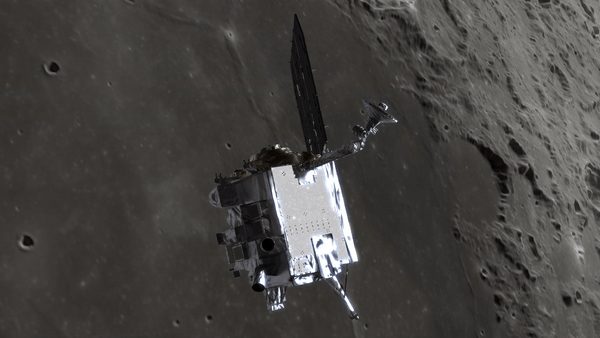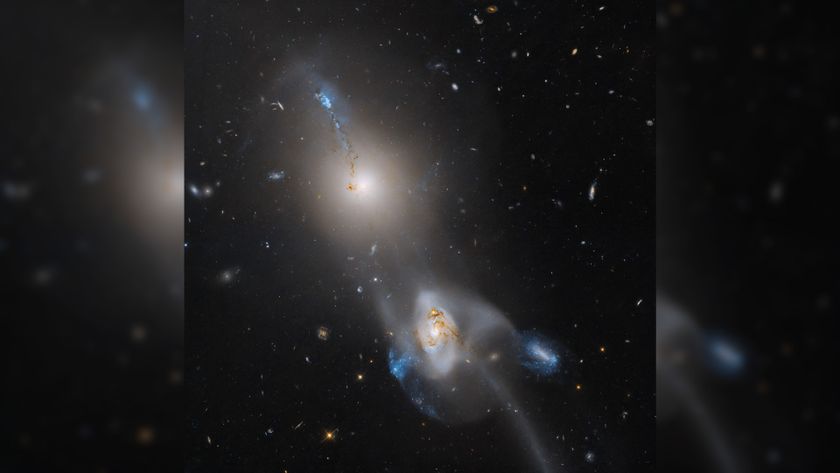Auroras Dazzle Northern Observers
Auroras a Sure Bet Over Poker Flat
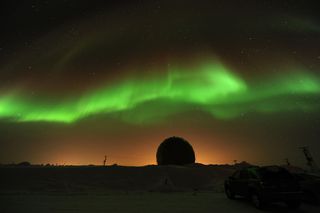
NASA space physicist James Spann took this stunning picture on March 1, 2011 from Poker Flat, Alaska, where he was attending a scientific conference to study auroras.
Stunning Finnish
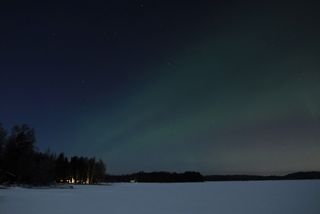
A powerful solar flare hurled into space when superhot gases erupted on the sun yesterday (Feb, 13), and caused a display of the aurora borealis for parts of the northern United States overnight (Feb. 14). Photographer Tom Eklund caught this aurora generated by the solar flare's interaction at Valkeakoski, Finland on Feb. 14. These geomagnetic storms are caused by particles that glow green in the ultraviolet part of the spectrum.
Roses Are Red, Auroras Are Green
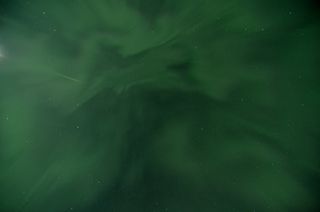
Chad Blakley captured this image of the aurora on Feb. 14 at Abisko National Park in Sweden. "Another great night in Abisko!" Blakley wrote on spaceweather.com. "My wife and I were enjoying the last few moments of our Valentine's date when my phone rang ... it was a friend telling me to look outside. When I pulled the curtains back the whole sky was alive. I missed the big show, but I was able to snap a few photos before my equipment and my body gave out ... it was a chilly 31 degrees [Celsius] below zero (minus 24 degrees Fahrenheit)!" See more of his aurora images at www.lightsoverlapland.com.
Aurora in the Park
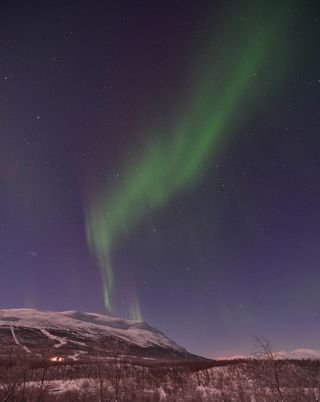
Blakley also captured this image of the aurora at Abisko National Park on Feb 14. The solar flare, categorized by the NOAA Space Weather Prediction Center in Colorado as a Class M6.6, was the strongest solar flare observed in 2011. Image courtesy of www.lightsoverlapland.com.
Aurora Comes in View
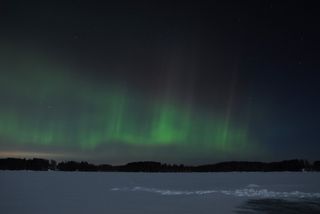
The flare triggered northern lights displays for skywatchers living in northern latitudes and graced with clear skies. Above, another photo from Tom Eklund of Finland taken on Feb. 14.
The Thin Green Line
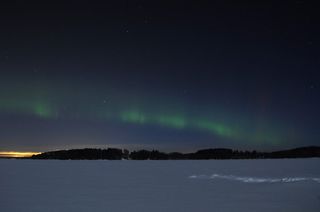
Finland was one of many places where photographers could take pictures of the aurora. Solar flares that cause auroras can act as a kind of explosion that sends streams of electrons and protons out into space. These electrons, protons and other particles are hurled out of the sun's magnetic field in a wave of electrified gas.
Magnetic Storm
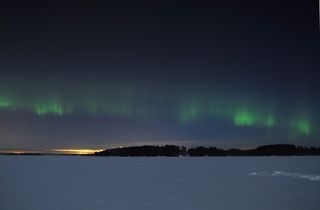
As electrons and protons come into contact with the Earth's magnetic field and stream toward the magnetic poles, the chance of a collision between these charged energy particles and the rarefied gases of the upper atmosphere increases dramatically, producing a disturbance, or "magnetic storm," in the Earth's magnetic field. Photographer Tom Eklund was in a picturesque spot to view this week's magnetic storm.
Get the Space.com Newsletter
Breaking space news, the latest updates on rocket launches, skywatching events and more!
The Wearing of the Green Aurora
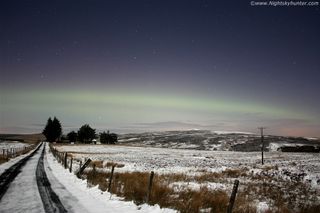
As photographers Conor McDonald saw on Feb. 15, the aurora borealis, or northern lights, stood out across Northern Ireland. "After a great day of snow showers we were treated to this wonderful aurora," McDonald wrote on spaceweather.com. Image courtesy of www.nightskyhunter.com.
May the Road Rise to Meet You (and the Aurora)
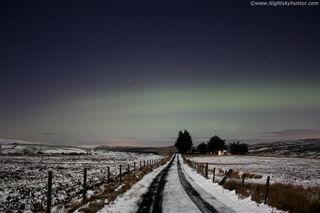
"Even with the bright moon up this fast changing bright and colorful aurora was enough to shine through." McDonald wrote. Image courtesy of www.nightskyhunter.com.
Image from Terje Sorgjerd's "The Aurora".
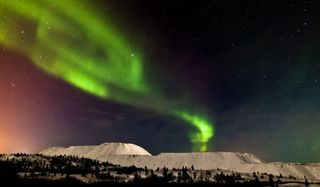
Norwegian photographer and skywatcher Terje Sorgjerd created an amazing video of the March 2011 auroras, or northern lights, which appear in this still from his project, entitiled "The Aurora.”
Hopkins' View of an Auroral Display
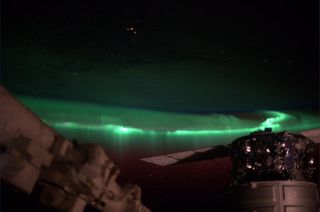
Astronaut Hopkins tweeted this photo of an aurora taken on the International Space Station on Feb. 3, 2014.
Join our Space Forums to keep talking space on the latest missions, night sky and more! And if you have a news tip, correction or comment, let us know at: community@space.com.
For the science geek in everyone, Live Science breaks down the stories behind the most interesting news and photos on the Internet, while also digging up fascinating discoveries that hit on a broad range of fields, from dinosaurs and archaeology to wacky physics and astronomy to health and human behavior. If you want to learn something interesting every day, Live Science is the place for you.

